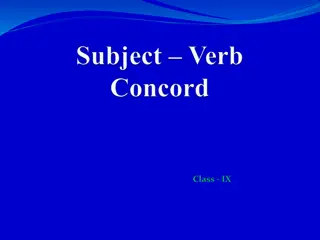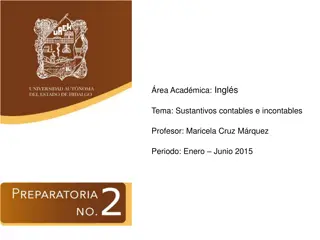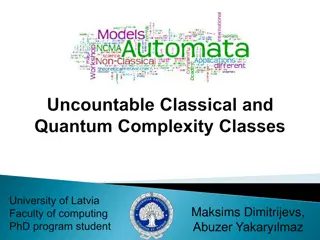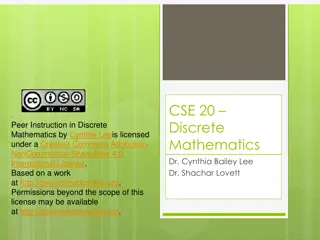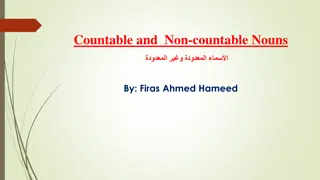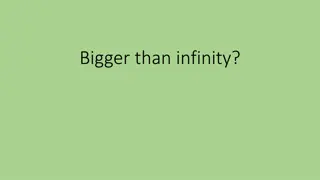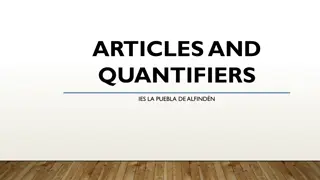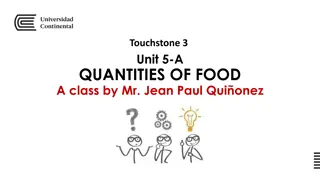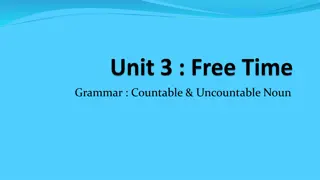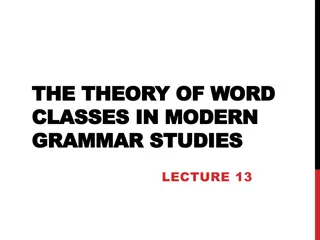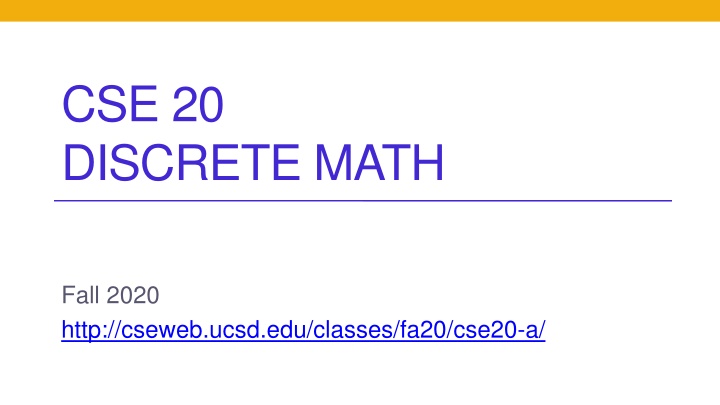
Exploring Discrete Mathematics: Sets, Infinity, and Diagonalization
Unlock the world of discrete mathematics by comparing set sizes, understanding cardinality, and exploring the concept of infinity through Cantor's diagonalization argument. Discover countable and uncountable sets, the power set operation, and witness the uncountability of N's power set. Dive into the intriguing realm of sets and infinity!
Uploaded on | 2 Views
Download Presentation

Please find below an Image/Link to download the presentation.
The content on the website is provided AS IS for your information and personal use only. It may not be sold, licensed, or shared on other websites without obtaining consent from the author. If you encounter any issues during the download, it is possible that the publisher has removed the file from their server.
You are allowed to download the files provided on this website for personal or commercial use, subject to the condition that they are used lawfully. All files are the property of their respective owners.
The content on the website is provided AS IS for your information and personal use only. It may not be sold, licensed, or shared on other websites without obtaining consent from the author.
E N D
Presentation Transcript
CSE 20 DISCRETE MATH Fall 2020 http://cseweb.ucsd.edu/classes/fa20/cse20-a/
Today's learning goals Compare sizes of sets using one-to-one, onto, and invertible functions. Classify sets by cardinality into: Finite sets, countable sets, uncountable sets. Explain the central idea in Cantor's diagonalization argument. |A| |B| means there is a one-to-one function from A to B. |A| |B| means there is an onto function from A to B. |A| = |B| means there is a bijection from A to B. Cantor-Schroder-Bernstein Theorem: |A| = |B| iff |A| |B| and |B| |A| iff |A| |B| and |B| |A|
Countable sets Rosen Def 3 p. 171 Finite sets |A| = |{1,...,n}| for some nonnegative int n or A is the empty set Countably infinite sets "Smallest" infinite sets |A| = |Z+| or |A| = |N| (e.g. can be listed out) 0 , -1 , 1 , -2 , 2 , -3 , 3 ,
There is an uncountable set!Rosen example 5, page 173-174 There are different sizes of infinity Some infinities are smaller than other infinities Key insight: of all the set operations we ve seen, the power set operation is the one where (for all finite examples) the output was a bigger set than the input. The power set of a finite set is finite. What about the power set of an infinite set?
N and its power set Which of the following are elements of ? A. 0 B. C. {0} D. E. All of the above
N and its power set Which of the following functions witness that ? A. B. C. D. All of the above E. None of the above
N and its power set Which of the following functions witness that ? A. B. C. D. All of the above E. None of the above
N and its power set Claim: is uncountable.
Where does this set come from? Diagonalization
Where does this set come from? Diagonalization
Bonus Lemmas how would you prove each one? If A and B are countable sets, then A U B is countable. If A and B are countable sets, then A x B is countable. If A is a subset of B, to show that |A| = |B|, it's enough to give a 1-1 function from B to A or an onto function from A to B. If A is a subset of a countable set, then it's countable. If A is a superset of an uncountable set, then it's uncountable. Theorem 1, p. 174 Generalize pairing idea Exercise 22, p. 176 Exercise 16, p. 176 Exercise 15, p. 176
There is an uncountable set!Rosen example 5, page 173-174 Cantor's diagonalization argument Theorem: For every set A, Proof: (Proof by contradiction) f x f(x) = X A
There is an uncountable set!Rosen example 5, page 173-174 Cantor's diagonalization argument Consider the subset D of A defined by, for each a in A:



